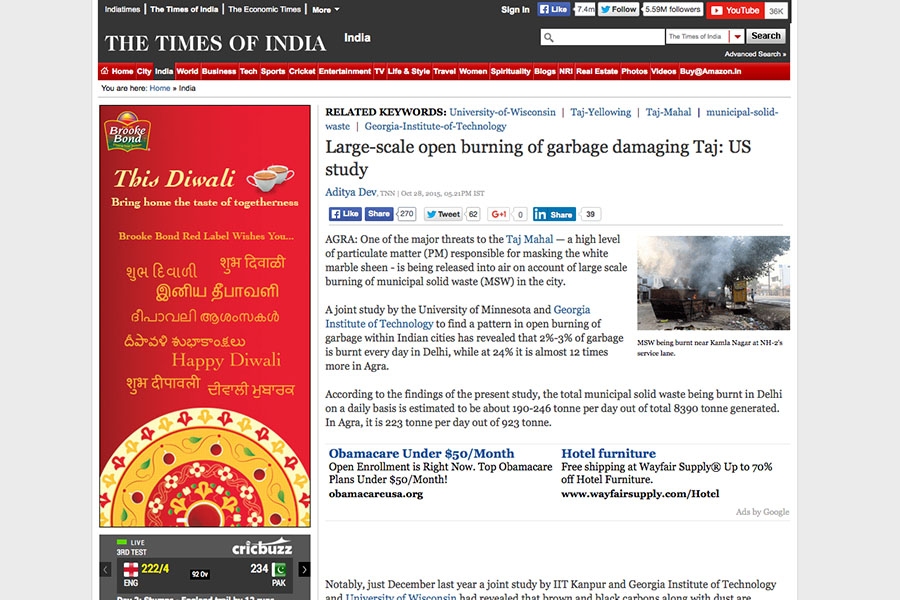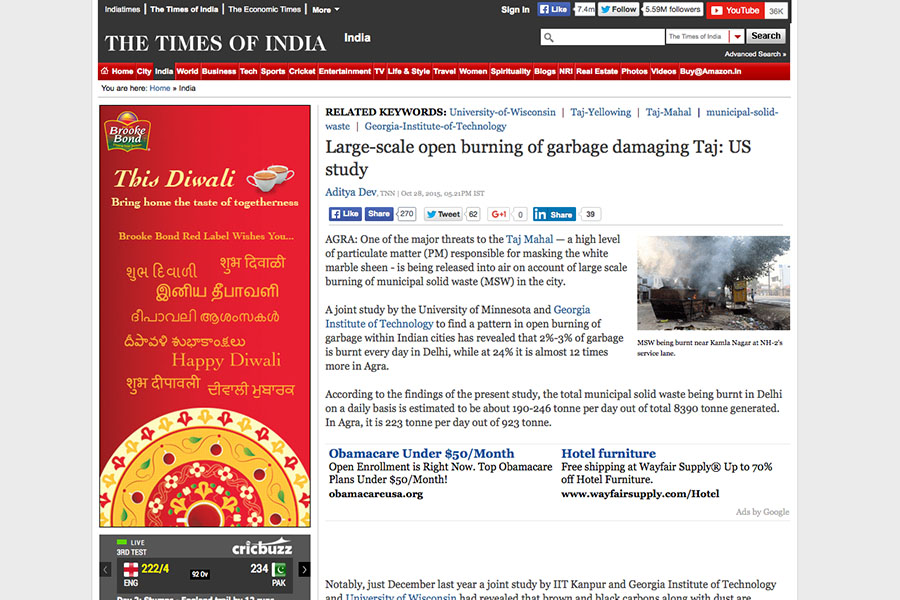

Last year, School of Civil and Environmental Engineers pinned the yellowing and browning of the Taj Mahal on air pollution — specifically airborne carbon particles and dust.
Now they’ve found one of the primary sources of those pollutants: large-scale open burning of garbage.
The study, by Armistead “Ted” Russell and colleagues at University of Minnesota, set out to find a pattern in how residents burn garbage in different Indian cities. They found 2 percent to 3 percent of municipal solid waste is burned in Delhi but 24 percent is burned in the city of Agra, the home of the Taj Mahal.
Their findings were published recently in the journal Environmental Science and Technology.
They've also gotten the attention of the Times of India and the Wall Street Journal.
